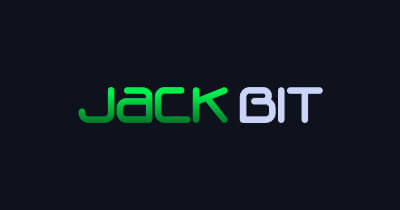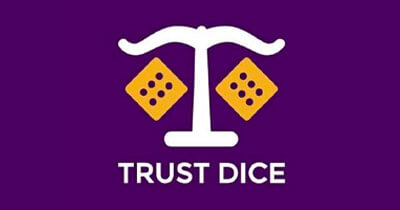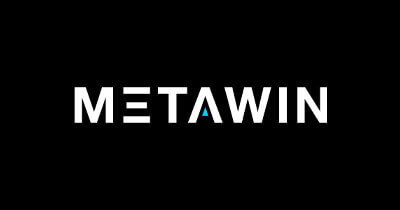Best Tether Casinos
Stable price, big rewards 💪Tether (USDT) is a popular blockchain-based, US dollar-pegged coin. It offers many of the benefits of cryptocurrencies with the stability of fiat money. It is becoming widely adopted in the crypto casino space, and this guide will tell you everything you need to know.

If you have been around the crypto block a few times, you know the pain of hitting a massive win on a slot, only to see the value of that coin drop 10% before you can withdraw it. That is where Tether shines. It offers the speed and anonymity of crypto without the heart-attack-inducing volatility of Bitcoin or Ethereum
In this guide, we are cutting through the marketing noise. We have hands-on tested the top casinos that accept USDT to see which ones actually deliver. We read the fine print), played the games, and basically did all the leg work.
| 💡 TL;DR |
|---|
| – Tether is a stablecoin. Unlike Bitcoin or Ethereum, USDT maintains a perfect 1:1 peg to the US Dollar, meaning your $100 win stays $100—no volatility surprises eating into your profits overnight. – Deposits and withdrawals hit your casino account in minutes, and transaction costs are just pennies on networks like Tron and Solana, letting you keep more of your winnings. – With massive liquidity and widespread adoption, you’ll never face the problem of your preferred casino not accepting your stablecoin, making it the most practical choice for serious players. |
Best Tether Casinos – Tested & Reviewed
We did not just read the FAQs. We actually used the site, went through the T&Cs, and more to get you the most relevant options. Plus, we have tested all these casinos ourselves, so feel free to read the full reviews.
| Crypto Casino | Welcome Offer | Our Rating | Play Now |
|---|---|---|---|
| Cloudbet | Up to $25,000 in cash | ⭐ 95/100 | Visit Cloudbet |
| Jackbit | 100 Free Spins (No Wager) | ⭐ 85/100 | Visit Jackbit |
| TrustDice | Up to 3 BTC + 100 Free Spins | ⭐ 90/100 | Visit TrustDice |
| Metawin | Up to 20 Free Spins | ⭐ 85/100 | Visit Metawin |
| BC.Game | Up to $20,000 | ⭐ 85/100 | Visit BC.Game |
Note: Always read the Terms & Conditions before depositing. Bonuses often have expiration dates and game restrictions that can catch you off guard.
Top-Rated Tether Casinos – In-Depth Analysis
Now that you have seen the snapshot, let’s get into the weeds. We are going to break down exactly what makes each of these casinos tick, where they excel, and where they might frustrate you.
Cloudbet
- Established reputation since 2013
- Support for 40+ cryptocurrencies
- Fast deposits and withdrawals
- Support for 40+ cryptocurrencies
Payment methods
Casino features
Cloudbet has been around since 2013, which is ancient in crypto years. What stood out during our testing was the sheer professionalism of the platform. It does not feel like a gamified video game; it feels like a serious betting platform. They support USDT on multiple networks, including Ethereum, Tron, and BSC, which gives you flexibility on fees. Their sportsbook is also arguably the best in this list if you like betting on the NFL or Premier League with your Tether.
The welcome bonus here is unique. Instead of giving you a lump sum that is locked, they release the bonus cash in increments as you play. You get up to 2,500 USDT, released for every 150 points you earn playing games. This is great because the cash that is released has no wagering requirements. Once it is in your account, you can withdraw it. They also threw in 200 free spins for good measure.
The biggest pro is the reputation and high betting limits, making it ideal for high rollers who want safety. The zero-wager release system is excellent for serious players. The downside is that casual players might find it hard to unlock the full bonus amount because the points requirement can be steep if you are betting small amounts.
Jackbit
- Supports 18+ cryptocurrencies
- No KYC required for most withdrawals
- Daily tournaments with a $500 prize pool
- No KYC required for most withdrawals
Payment methods
Casino features
Jackbit is a newer contender that has quickly gained a cult following for one specific reason: Wager-Free Bonuses. Most casinos trap you with “40x wagering requirements,” meaning you have to bet your bonus 40 times before you can cash out. Jackbit does away with that. Their interface is dark, sleek, and very modern, with a heavy focus on mini-games and slots.
Their standout offer is 100 Free Spins when you deposit $50 or more. The winnings from these spins are yours to keep after playthrough. No hidden math. No rollover traps. We also noticed they offer significant “Rakeback” (cashback on every bet) right from the start, which adds up if you are a high-volume player. They accept USDT primarily via the TRC20 (Tron) network, which keeps your transaction fees under a dollar.
The absolute best feature is the wager-free nature of the spins; what you win is yours. The instant rakeback is also a huge plus. On the downside, the lack of a massive matched deposit bonus (like getting $1,000 extra to play with) might turn off players who want a huge starting bankroll to extend their playtime.
Trustdice
- Supports 9+ cryptocurrencies
- Offers original, provably fair games
- Native TXT token
- Offers original, provably fair games
Payment methods
Casino features
Trust Dice brands itself as the “Real Crypto Casino,” and it leans heavily into the culture. It runs on the EOS blockchain but fully supports Tether. The site has a very community-focused vibe with a bustling chat room where players tip each other. They also have their own proprietary game, “Dice,” which is provably fair, meaning you can verify the blockchain randomness of every single roll yourself.
The welcome package is massive, totaling up to $90,000 (or equivalent) across your first three deposits. But the real USP here is the Crypto Faucet. You can claim free crypto every six hours just for existing. It is not a lot of money, but it allows you to test games without depositing. During our review, we also found their withdrawal speeds to be near-instant for USDT, especially if you use the TRC20 network.
The faucet is a fantastic feature for beginners who want to test the waters. The proprietary games offer a transparency that standard slots lack. However, the wagering requirements on the main welcome bonus are standard (around 35x-40x), which is higher than Cloudbet or Jackbit. The site design can also feel a bit cluttered compared to the sleekness of Metawin.
MetaWin
- Min. Wagering starts at 1x
- Min. Withdrawal is $10
- Multiple Web3 Wallets
- Min. Withdrawal is $10
Payment methods
Casino features
Metawin is the future of gambling for the Web3 native. If you have a MetaMask or Phantom wallet, this is your paradise. You do not create an account with an email and password; you simply “Connect Wallet” and play. This makes it the most private and fastest experience on this list. We connected a wallet, deposited USDT, and were spinning slots in under 60 seconds.
Because it is Web3-focused, they don’t do a traditional “Welcome Bonus.” Instead, they have massive “Daily Races” and “0% House Edge” promotions. For example, if you play specific slots, the casino takes zero profit, giving you the true mathematical odds. They also have incredibly high withdrawal limits (up to 30 ETH daily), which is why “whales” love this platform.
The speed and privacy are unmatched; no KYC for standard play and instant wallet connection is a game-changer. The 0% house edge is mathematically better than a bonus in the long run. The con is obvious: if you don’t have a Web3 wallet or prefer a traditional “sign up with email” flow, this site might feel alien. The lack of a deposit match bonus is also a negative for some.
BC.Game
- Support for 140+ cryptocurrencies
- Native BC Token for extra perks
- 10,000+ games with original titles
- Native BC Token for extra perks
Payment methods
Casino features
BC. Game is a behemoth. It feels less like a casino and more like a social media platform for gamblers. They have rain (free chat money), distinct VIP levels, and thousands of games. They support virtually every network for Tether, so whether you have USDT on Polygon, Solana, or Avalanche, they can take it.
Their welcome package is the biggest in terms of percentage, offering deposit matches of 180%, 240%, 300%, and 360% across your first four deposits. There is a catch: the bonus is paid in “BCD” (their internal coin) which unlocks as you wager. However, if you deposit within 7 minutes of registering, the first deposit gets a massive 300% boost. It is high-pressure, but high-reward.
The sheer amount of gamification (medals, tasks, levels) keeps things fun. The game selection is the largest of the bunch. The downside is the complexity of the BCD unlocking system; it can be confusing for new players to understand why they can’t withdraw their bonus immediately.
What is Tether (USDT)?
Tether (USDT) is the world’s most popular “stablecoin.” Unlike Bitcoin, which can swing 10% in a single day, Tether is pegged 1:1 to the US Dollar. This means 1 USDT is always designed to be worth exactly $1.00. It was created to offer the best of both worlds: the unrestricted nature of cryptocurrency and the stable value of fiat currency. For gamblers, this is the “holy grail” because it allows you to lock in your winnings without worrying that a market crash will wipe out your profit before you can cash out.
Tether Special Features
While it might just look like a digital dollar, Tether has some distinct features that make it superior for iGaming:
- Multi-Chain Availability: This is the big one. USDT exists on many different blockchains. You can send it via Ethereum (ERC20), Tron (TRC20), Solana, Polygon, and more. This lets you shop around for the lowest transaction fees.
- Tether Gold (XAUt): Did you know Tether also has a gold-backed token? Tether Gold
- is a digital asset where each token represents one troy ounce of gold in a Swiss vault. While less common in casinos, it shows the company’s depth.
- Uncapped liquidity: With billions in circulation, you will never face a liquidity crisis. Cashing out $1 million in USDT is instantaneous, whereas cashing out that amount in a smaller altcoin could crash the price.
How to Use Tether for Crypto Casinos?
Using Tether is slightly different than using a credit card, but once you do it once, it is incredibly fast.
Tether Deposits and Withdrawals
Since most casinos do not let you buy crypto directly on their site (or charge high fees if they do), you will usually buy USDT on an exchange and send it over.
- Choose Your Network: This is critical. If the casino gives you a TRC20 address (starts with ‘T’), you must send your USDT using the Tron network. If you send it via Ethereum to a Tron address, your money will be lost forever.
- The Transfer: Copy the casino’s deposit address into your wallet or exchange. Double-check the first and last four characters.
- Wait Time: On TRC20 or Solana, the deposit should appear in under 2 minutes. On Ethereum, it might take 10-15 minutes depending on congestion.
| ✨ Fun Fact: In 2025, Tether’s circulation surpassed $174 billion, and the company holds more US Treasury bills than many sovereign nations, making it a financial powerhouse that rivals actual countries in terms of economic weight. |
Tether Pros & Cons
Here is the honest breakdown of using USDT for casinos.
✅ Pros
- Stability: Your $100 win stays $100. Unlike Bitcoin or Ethereum, which can swing wildly in value, Tether maintains a consistent 1:1 peg to the US Dollar.
- Speed: With Tether, your deposit hits your casino account in minutes, sometimes seconds. This speed advantage is especially valuable if you want to jump on a limited-time promotion or take advantage of favorable odds before they shift.
- Low Fees: Costs pennies to send via Tron or Solana. This low-fee structure means more of your money actually reaches the casino, and when you withdraw, you keep more of your winnings instead of losing it to blockchain fees.
- Availability: As mentioned, Tether (USDT) is accepted at most of crypto casinos out there. You won’t run into situations where you have to convert your funds or use an unfamiliar payment method.
❌ Cons
- Centralization: Unlike Bitcoin, Tether is run by a central company that can technically freeze addresses. This goes against the core crypto philosophy of censorship resistance.
- Network Confusion: Sending ERC20 tokens to a TRC20 address results in lost funds. This is the biggest practical pain point for newcomers. Tether exists on multiple blockchains (Ethereum as ERC20, Tron as TRC20, Solana, Polygon, etc.), and if you send your USDT to the wrong network address, your money is gone forever.
- No “Moon” Potential: You won’t get rich just by holding the coin in your casino balance. Tether’s purpose is stability, not appreciation.
Final Thoughts
Tether really is the sweet spot for online casinos. It removes the stress of crypto volatility, letting you focus entirely on your gaming strategy. Whether you choose Cloudbet for its reliability, Metawin for its speed, or Jackbit for those wager-free spins, you are getting a superior experience compared to traditional fiat casinos. Just remember to check your network (TRC20 vs ERC20) before you hit send, and always gamble responsibly.
References
Forbes. (2023). Billions of Tether’s reserves were stored at Cantor Fitzgerald and other financial institutions. Retrieved from https://www.forbes.com/sites/davidjeans/2023/02/10/tether-reserves-cantor-capital-union-ansbacher/
Investopedia. (2025). What is Tether (USDT)? Understanding its importance and uses. Retrieved from https://www.investopedia.com/terms/t/tether-usdt.asp
Tether. (2014). Tether: Fiat currencies on the Bitcoin blockchain [White Paper]. Retrieved from https://assets.ctfassets.net/vyse88cgwfbl/5UWgHMvz071t2Cq5yTw5vi/c9798ea8db99311bf90ebe0810938b01/TetherWhitePaper.pdf
Tether. (2025). Tether attestation reports Q1-Q3 2025 profit surpassing $10B with record levels in US treasuries exposure. Retrieved from https://tether.io/news/tether-attestation-reports-q1-q3-2025-profit-surpassing-10b-record-levels-in-us-treasuries-exposure-accel
Tether. (2025). Transparency: Reports and reserves. Retrieved from https://tether.to/ru/transparency/?tab=reports
CoinMarketCap. (2025). Tether USDt price, market cap, and live chart. Retrieved from https://coinmarketcap.com/currencies/tether/
This guide is for information and entertainment purposes only and does not constitute financial, investment, or trading advice. Always check the legal status of online gambling and cryptocurrency in your jurisdiction, and only play at licensed operators that offer responsible gambling tools such as limits, time-outs, and self-exclusion. If you feel your gambling is no longer fun or is affecting your life, seek professional help immediately and consider using national helplines or self-exclusion programs.






